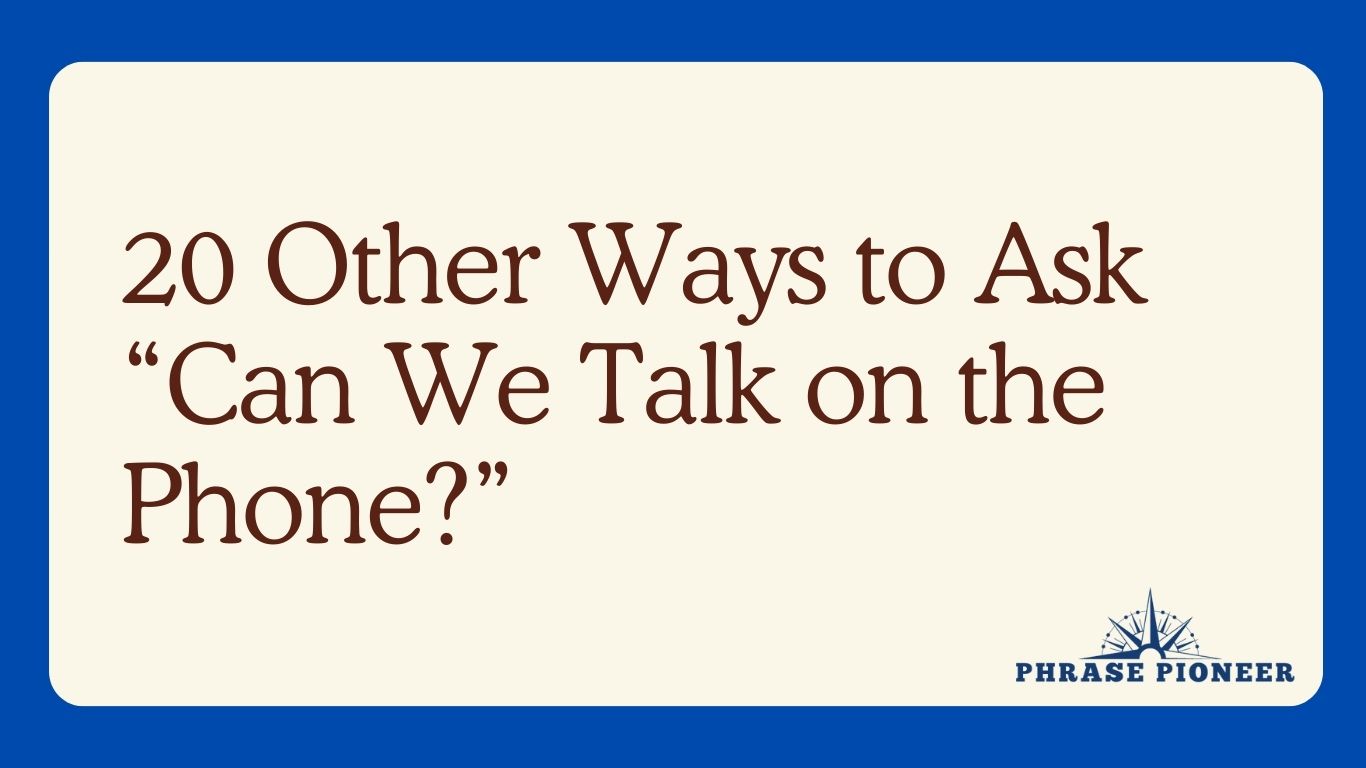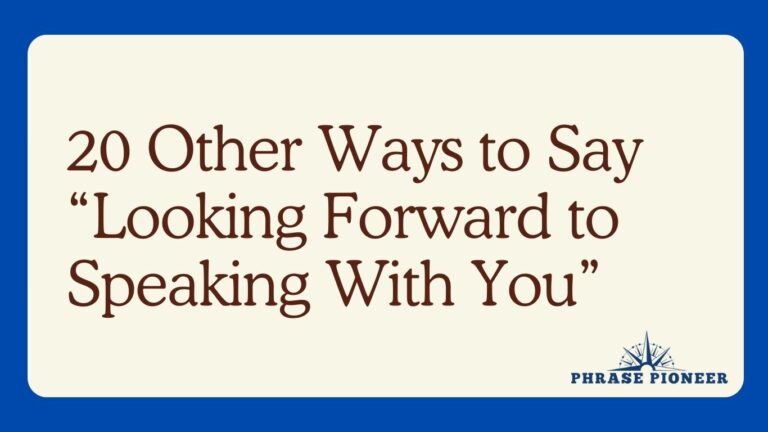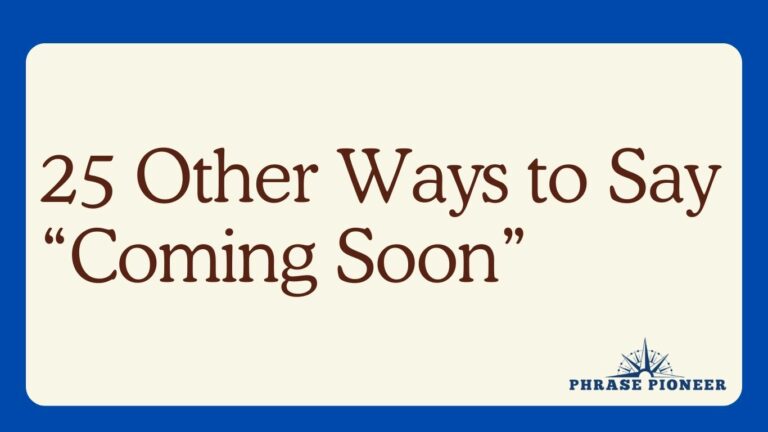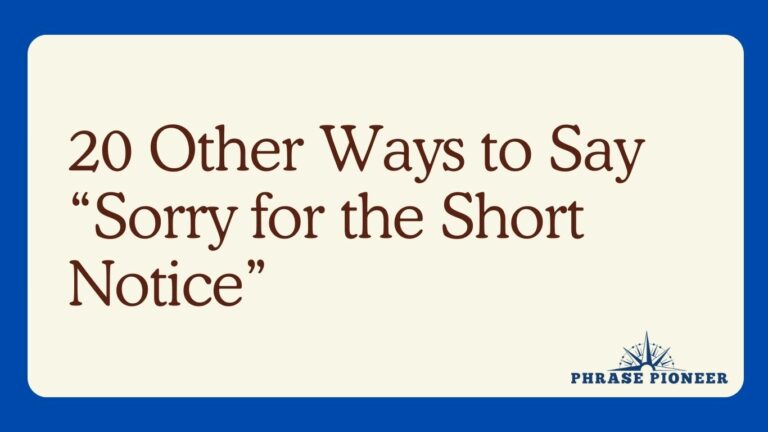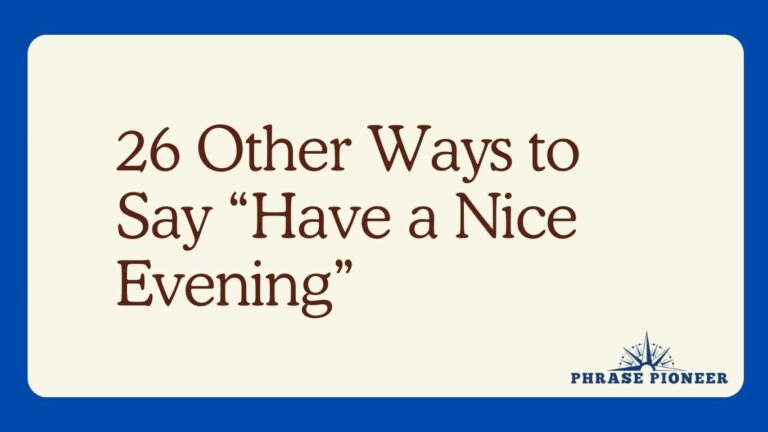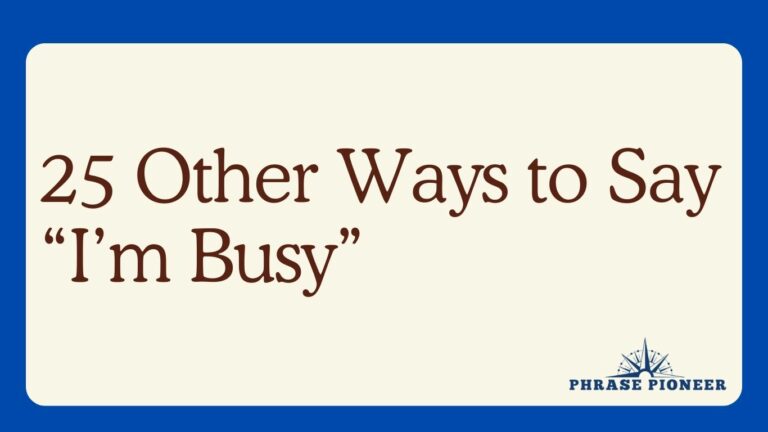20 Other Ways to Ask “Can We Talk on the Phone?”
Effective communication often involves timely and direct conversations, and when wanting to transition an exchange to a phone call, it can be beneficial to ask in a manner that is considerate and context-appropriate.
Below are 20 alternative ways to ask “Can we talk on the phone?” Each option is accompanied by an explanation to help you choose the best phrase for your specific needs.
Direct and Professional Requests:
1. “Is this a good time for a phone conversation?”
Explanation: This question demonstrates respect for the other person’s time and sets the stage for mutual convenience.
2. “Could we continue this discussion over a call?”
Explanation: Framing the request as a continuation of an ongoing dialogue can ease the transition to a phone call.
3. “May I have a moment of your time for a quick call?”
Explanation: The word “quick” suggests that you value their time and won’t take up much of it.
4. “Would you be open to discussing this on the phone?”
Explanation: This phrasing encourages openness and provides the recipient with a choice, offering a sense of control.
5. “Can I give you a ring to talk this through?”
Explanation: “Give you a ring” is a casual and friendly way to suggest a phone call without seeming too formal.
Considerate and Respectful Queries:
6. “I’d appreciate sharing thoughts over the phone. Would that work for you?”
Explanation: Expressing appreciation in advance acknowledges the person’s willingness to engage in the conversation.
7. “Would it be possible to handle this matter with a phone call?”
Explanation: This option positions the phone call as a possibly more effective means of dealing with the issue.
8. “Are you available for a phone discussion sometime soon?”
Explanation: Implies flexibility on your part while seeking consent to converse over the phone.
9. “Do you have time for a telephone meeting today?”
Explanation: Presents a phone call as a meeting, which could resonate well in a professional context.
10. “Might we set up a call to converse about this?”
Explanation: Offers a polite and formal invitation to discuss matters on the phone, showing consideration for planning.
Informal and Friendly Invites:
11. “Let’s chat on the phone, shall we?”
Explanation: An informal and friendly proposal that suggests a phone chat without any imposing language.
12. “How about we take this conversation to a call?”
Explanation: “Take this conversation to a call” is a casual way to shift from text-based communication to a phone call.
13. “Mind if we talk this over via phone?”
Explanation: This informal question checks for the other person’s comfort with a switch to verbal communication.
14. “Can I call you to go over these details?”
Explanation: Directly asks for permission to call with the intention of discussing specific details.
15. “Fancy a call to hash this out?”
Explanation: Uses the colloquial “fancy a call” to propose a discussion in a lighthearted manner.
Tactful and Sensitive Suggestions:
16. “I believe a phone call might be more efficient. What are your thoughts?”
Explanation: This approach lets the other person know that you respect their opinion on the preferred communication method.
17. “Would discussing this verbally be more convenient for you?”
Explanation: Prioritizes the other person’s convenience and implies that the call is for their benefit.
18. “I think a call could provide us with clarity. When suits you?”
Explanation: Positions the phone call as a way to achieve clarity and seeks a suitable time, respectful of the recipient’s schedule.
19. “Should we switch to a call for a more in-depth conversation?”
Explanation: Implies that the matter at hand may require the nuance that voice communication provides.
20. “Could we sync up on the phone about this topic?”
Explanation: “Sync up” suggests a mutual effort to reconcile thoughts or viewpoints, appealing to collaboration.
When requesting a phone call, it’s vital to be mindful of language, tone, and the other person’s preferences.
The right phrasing in your request can foster a more open dialogue, ensure that your communications are well-received, and facilitate a move toward more personal interactions.
Whether you opt for a direct, casual, or formal approach, the key is to make the other individual feel comfortable and respected.

